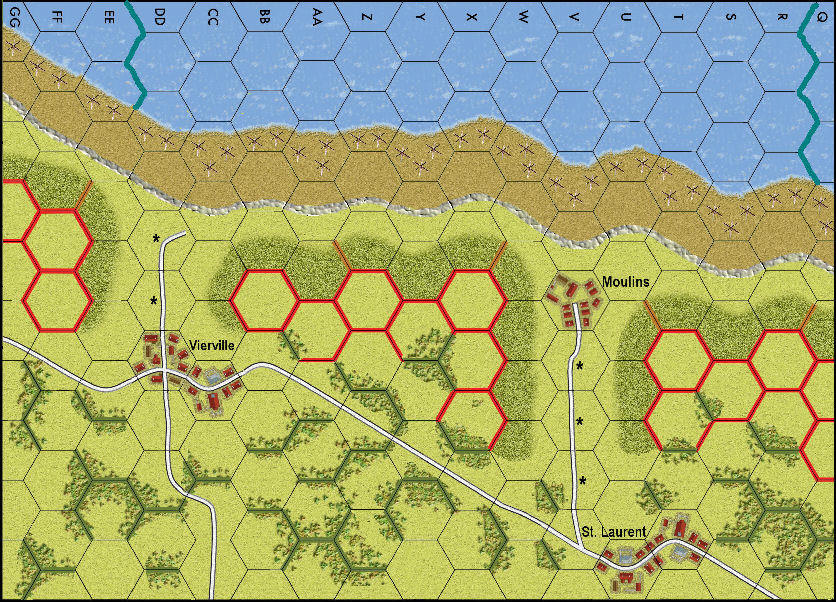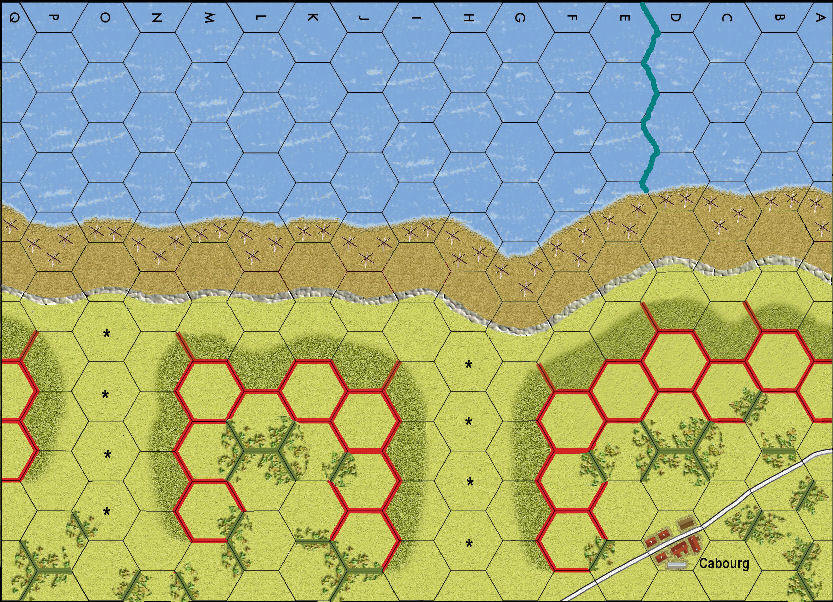

Omaha Beach
Omaha Beach was the least desirable landing zone of the five beaches chosen but had to be taken if all five beaches were to be linked together. The four mile wide beach was backed by a high bluff which was only passable to vehicles at a handful of low draws, all heavily defended by the Germans. The tide at Omaha is very extreme and the beach at low tide is almost 500 yards of open sand. At the high water mark is a band of loose rocks (called chert) and a sea wall which is almost impenetrable by vehicles, especially tanks, which tend to throw tracks in the rocks.
The Germans defended this beach by building many obstacles on the beach designed to hinder or destroy any landing craft attempting to get through them backed by a number of concrete buckers or pillboxes on the bluffs, designed to rake the beach with a number of interlocking fields of fire. Minefields and concrete barricades at the draws sealed up any motorized advance inland. The defense was completed by artillery batteries further inland providing heavy fire support. This left the landing forces with two possible plans. They could land at high tide to allow the assault forces to approach much nearer to the bluffs and perhaps suffer fewer casualties on the beach while losing many more landing craft to mines and obstacles; or they could land at low tide, losing fewer assault craft but leaving assault troops to advance 300 to 500 yards on an open beach. The Germans assumed that any landing made here would be at high tide and thus were not fully alert to a possible landing at low tide.
The Allies chose to land at low tide. Cover for the troops as they advanced was supposed to be provided by many bombing craters, courtesy of the Army Air Corps. Unfortunately, the weather was overcast in many places and the bombing was shifted to inland targets (as ordered by weather conditions) and did not leave many impacts on the beach itself. Immediate fire support was supposed to be provided by a number of DD Sherman amphibious tanks which were to land before the troops and engage enemy targets as the troops advance. Additional immediate fire support was provided by destroyers just off the beach, many of them running into dangerously shallow water in order to give better fire support to the troops. In order to safely land follow-up craft on the beach as the tide rose, sixteen special companies of engineers mixed with naval personnel were landed in the early waves and detailed to clear lanes through the obstacles by blowing them up and then marking the cleared lanes with tall flags. Engineers would then need to clear passable lanes through the rocky chert by using explosives or Sherman Tankdozers. After all this was done, the obstacles in the draws themselves would have to be blown up or pushed aside by the Shermans. Clearing the draws was therefore the primary objective for the first two hours of the assault.